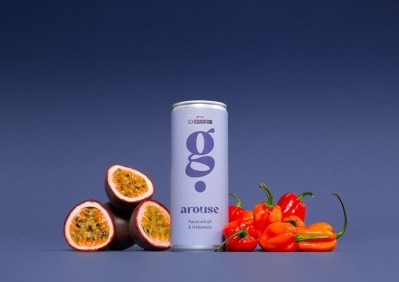Vitamins & minerals in sports drinks: What companies need to know while navigating the latest EU legislative developments

Vitamins and minerals included in foods and food supplements offer an important boost: but - unknown to many consumers - can be harmful if taken in high amounts.
Consequently, the EU sets maximum levels for vitamins or minerals that may be added to food supplements and fortified foods - ranging from breakfast cereals to margarine. And yet sports drinks cater for a specific audience of physically active consumers, with different needs to an average consumer.
The European Specialist Sports Nutrition Alliance (ESSNA) explains everything sports drinks businesses need to know about the latest developments.
Regulatory state of play and challenges
The EU legal framework of MPLs for vitamins and minerals is provided by Article 5 of Directive 2002/46/EC (Food Supplements Directive), which stipulates that maximum amounts of vitamins and minerals present in food supplement per daily portion of consumption shall be set.
“The Article also describes the factors that need to be taken into account when doing so, including, among others, that upper safe levels of vitamins and minerals need to be established by scientific risk assessment based on generally accepted scientific data, taking into account, as appropriate, the varying degrees of sensitivity of different consumer groups,” explains Luca Bucchini, chair of ESSNA.
“After many years of discussions, an agreement on MPLs of vitamins and minerals could not be found, so due to the lack of consensus, a number of Member States went ahead to set their own MPLs, creating differences in levels across the EU and challenges for businesses selling in different markets.
“However, after a long hiatus on this debate, in 2021, the European Commission initiated discussions again with Member States and mandated EFSA to review ULs of a number of key nutrients, with the objective to introduce harmonised, EU-wide MPLs for vitamins and minerals included in foods and food supplements."
While Bucchini says this is a welcome development that would address the current fragmentation of the Single Market, there are some challenges that the sports and active nutrition sector need to watch out for.
"The main issue for the industry is to ensure that the specificities of its products and the dietary needs of active consumers are taken into account in the review of MPLs," he said.
“We’ve already seen this issue with EFSA’s scientific opinion on vitamin B6 - a nutrient included in many sports beverages - that was published last year, following the Commission’s request to update its scientific advice on ULs. EFSA proposed to lower the current UL of 25mg/day for adults to 12mg/day. As the European Specialist Sports Nutrition Alliance (ESSNA) has stressed in its response to EFSA’s respective consultation, according to calculations by the association, this could mean that the MPLs for food supplements would be 5mg/day and for other sports and active nutrition products 2-3 mg/day.”
"ESSNA emphasised that many sports nutrition companies manufacture products containing doses of vitamin B6 at 20mg/day, which are in line with the current UL of 25mg/day, to cater for the dietary needs of sportspeople and argued that not only sports and active nutrition manufacturers would need to reformulate or discard their products, which would cause important costs but also such ULs would be insufficient to cater for the needs of physically active consumers".
The latest developments...
Sports drinks businesses interested in vitamin or mineral blends should know that, throughout 2023, EFSA also published its opinions on vitamin D, acid/folate and manganese, and recently, the attention has turned to public consultations on their draft opinions on vitamin A, b-carotene and iron.
“For vitamin D, EFSA upheld its previous opinion and confirmed that the nutrient could be consumed at a UL of 100 mg equivalent to (VDE)/day,” said Bucchini. “For manganese, they established a safe level of intake for adults at 8 mg/day, based on the observed intake data of high consumption of this nutrient in European populations. For folic acid/folate, EFSA confirmed the retention of the UL previously established of 1,000 mg folic acid/day for adults.
“On the recent draft opinions on vitamin A/beta-carotene and iron, EFSA proposed to retain the UL for preformed vitamin A of 3,000 mg RE/day for adults, while they were unable to establish a UL for iron based on organ toxicity due to a lack of dose-response information, but they recommended a safe level of intake of 17 mg/day. Also, due to insufficient data, EFSA could not establish an UL or safe level of intake for supplemental β-carotene for any population group.
“With the Commission initially planning to put forward a proposal for EU-wide MPLs in Q1 2024, uncertainty is growing among sports and active nutrition businesses, not only because of this delay but also as the question remains whether the specificities of their products will be sufficiently considered in the proposal. At the same time, the upcoming European elections, taking place on 6th – 9th June 2024 across EU 27 Member States, provide stakeholders with the opportunity to address this challenge. Companies need to build relationships with policymakers and help them gain a better understanding of sports nutrition to ensure that any changes to MPLs are based on sound science, take into account the interests of the industry, and do not compromise consumer safety.”
As it engages directly with EFSA and policymakers to represent the voice of the sector, ESSNA will provide members with timely updates. Organisations interested in finding out more can get in touch at info@essna.com














